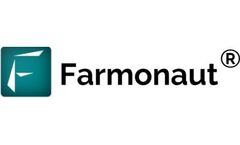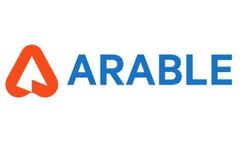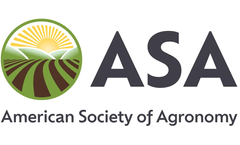Ndvi Vegetation Articles & Analysis
22 articles found
The ThirdEye project supports farmers in Mozambique and Kenya with their decision making in farm and crop management by setting up a network of flying sensors operators. Our innovation is a major transformation in farmers’ decision making regarding the application of limited resources such as water, seeds, fertilizer and labor. Instead of relying on common-sense management, farmers are now ...
The images helps as per following: NDVI (Normalised difference vegetative index): NDVI images help to differentiate the bare soil from forests or grassland, detect plants under stress and know the different crops and crop stages. ...
A formula is used to analyse the NIR data returned and provides Pollen Systems with two main metrics to measure plant vigor: NDVI (Normalized Difference Vegetation Index) and NDRE (Normalized Difference Red Edge). These vegetation indices are each unique ways to assess the health of your fields, and offer helpful insights for farm ...
While the potential is clear, early attempts and even some current offerings by companies that offer satellite data analytics use Satellite imagery data such as Normalised Difference Vegetation Index (NDVI) to predict yield and this has led to large error rates, up to 50%. ...
Satellite Imagery, Ground Sensors and AI Modern satellite imagery especially the multi-wavelength imagery when combined with sensor data allows remote detection of soil moisture, which is both cost-effective and scalable. Vegetation health indices such as Normalised Difference Vegetation Index (NDVI) and Normalised Difference Water Index ...
Benefits of AgTech Software There are many ways AgTech software benefits farmers, providing visibility and insights into the day-to-day activities and operations, including the following: Decreases food-borne illnesses due to pathogens, ensuring better, safer nutrition sources Enables a larger variety of produce Creates a traceable trail from the grocer or restaurant back to the field, and ...
3D assessment of plants became a commonly used technology in plant phenotyping to measure morphological and architectural features of plants. Although, 3D sensors such as PlantEye can be the workhorse for every phenotyping platform, it still lacks the ability to measure changes in color or other spectral information that are an important indicator for the plants physiological ...
The images were then uploaded to Solvi, which processed them and within about 20 minutes produced detailed map over the whole field that clearly showed variations based on NDVI vegetation index. As soon as the field was mapped, the decision was made that the N would be spread using a variable rate application file. ...
BySolvi AB
UNL and Nature Conservancy partner with Arable to establish a network of sensors for better access to local weather data. Fifty miles is a long way to drive to check a rain bucket on a center pivot. That's the challenge Chase Johnson dealt with whenever he wanted to know exactly how much rain fell on one of his ...
ByArable
These maps most often use the Normalized Difference Vegetation Index (NDVI) to measure vine vigor. NDVI has been the standard in the wine industry since the Mondavi Project in 1992. NDVI is a calculation between the near-infrared light reflected by vegetation and the visible light. ...
ByVineView
Not all NDVI is created equal Normalized difference vegetation index (NDVI) imagery products have become increasingly common in precision agriculture applications. More companies are offering NDVI and NDVI-like products, including “Synthetic NDVI” images from drone platforms. ...
For agriculture applications, operators simultaneously capture high-resolution color, NIR, and normalized difference vegetation index (NDVI) data — providing growers with precise crop-health imagery. ...
Previous attempts to use satellite or aerial imagery to assess soil salinity have found limited success in part because of the inability of methods to isolate the effects of soil salinity on vegetative growth from other factors. This study evaluated the use of Moderate Resolution Imaging Spectroradiometer (MODIS) imagery in conjunction with directed soil sampling to assess and ...
.; ‘Salam’) in Naples, FL in summer 2006 on a 2.5 m grid for volumetric water content (VWC) by time-domain reflectrometry at field capacity and normalized difference vegetative index (NDVI). Objectives were to determine suitability of the GPS-enabled mapping device and to develop protocols for defining and characterizing SSMUs by geographic information system ...
This study was conducted to determine whether vine leaf area index could be estimated, and mapped through normalized difference vegetation index (NDVI) ground-based measurements. The NDVI measurements were performed using a Greenseeker (N-Tech Industires, Ukiah, CA and Oklahoma State Univ., Stillwater), pointed sideways at the vertical shoot ...
The objective of this study was to determine the sampling grid size that would adequately describe field variation in canopy normalized difference vegetative index (NDVI) by varying either physical sensor density or sensor output density. Wheat (Triticum aestivum L.) canopy NDVI data were collected at Feekes growth stage 3 in five fields in ...
The objective of this study was to determine the sampling grid size that would adequately describe field variation in canopy normalized difference vegetative index (NDVI) by varying either physical sensor density or sensor output density. Wheat (Triticum aestivum L.) canopy NDVI data were collected at Feekes growth stage 3 in five fields in ...
For cultivar VA 98R, Pearson's correlations were significant for all bandwidth categories except the normalized difference vegetation index (NDVI) when reflectance was compared with percentage of mature pods. ...
The objectives of this study were to (i) estimate herbage mass using an active, on-the-go, ground-based, narrow band sensor to calculate the normalized difference vegetation index (NDVI), (ii) determine if NDVI may be used to assess spatial variability of herbage mass of grasslands, and (iii) determine if NDVI may be used to ...
Spectral vegetation indices such as the normalized difference vegetation index (NDVI) have been shown to be useful for indirectly obtaining crop information such as photosynthetic efficiency, productivity potential, and potential yield. ...












